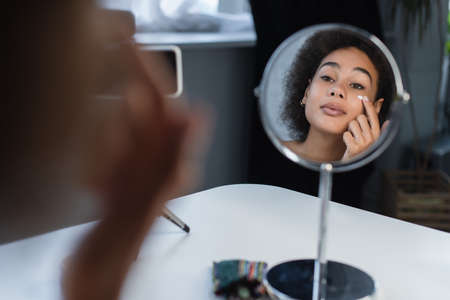1. Understanding Indian Skin and Beauty Preferences
India is renowned for its vibrant diversity, and this uniqueness extends deeply into the realms of beauty and personal care. With a vast range of skin tones from fair to deep brown, varying hair types such as straight, wavy, curly, and coily, and a rich tapestry of traditional beauty ideals, Indian consumers have distinct expectations when it comes to beauty products. The influence of climate – from humid coastal regions to arid interiors – further shapes these needs, making it essential for brands to recognize regional differences. Additionally, time-honoured practices like Ayurveda, herbal remedies, and natural ingredients play a central role in beauty routines across generations. Recognizing and respecting these cultural nuances allows brands to develop products that are not only effective but also resonate deeply with Indian values and preferences. By understanding the multifaceted nature of Indian beauty, companies can lay the foundation for truly meaningful customer engagement and product improvement.
Collecting Meaningful Feedback from Indian Consumers
To truly improve beauty products for the diverse Indian market, it is essential to gather feedback that reflects the unique preferences and needs of local consumers. The following strategies highlight how brands can effectively collect valuable insights:
Leveraging Social Media Trends
India’s vibrant social media landscape offers a goldmine of real-time customer opinions. Popular platforms like Instagram, Facebook, and YouTube are commonly used by beauty enthusiasts to share product experiences, post reviews, and join discussions about the latest trends. By monitoring hashtags such as #DesiBeauty, #IndianMakeup, and #SwatchTestIndia, brands can identify trending topics and common concerns.
Engaging with Beauty Influencers
Beauty influencers have a profound impact on consumer choices across India’s metro cities and even in tier-2 and tier-3 towns. Collaborating with regional influencers—who communicate in Hindi, Tamil, Bengali, Marathi, or Telugu—enables brands to reach specific communities authentically. By inviting influencers to review products or host Q&A sessions, brands can gain actionable feedback while increasing product visibility.
Influencer Engagement Strategies Table
| Strategy | Description | Benefits |
|---|---|---|
| Product Seeding | Send samples to influencers for honest reviews | Authentic feedback; organic reach among followers |
| Live Demos/Reviews | Host live sessions for real-time consumer questions | Immediate feedback; direct engagement with audience |
| Regional Campaigns | Create content in local languages for targeted regions | Cultural relevance; builds local trust |
Utilizing Regional Languages for Surveys & Polls
Diversity in language is a defining aspect of Indian culture. Brands should design surveys, polls, and feedback forms in major regional languages to encourage participation from all corners of the country. This inclusivity ensures that voices from smaller towns and various linguistic backgrounds are not overlooked.
Key Regional Languages for Consumer Feedback Collection:
- Hindi – North & Central India
- Tamil – Tamil Nadu & Puducherry
- Bengali – West Bengal & Tripura
- Marathi – Maharashtra & Goa
- Telugu – Andhra Pradesh & Telangana
- Kannada – Karnataka
- Malayalam – Kerala
- Punjabi – Punjab & Haryana
- Gujarati – Gujarat
- Odia – Odisha
This multi-channel approach—combining social media monitoring, influencer partnerships, and multilingual outreach—ensures that beauty brands receive feedback reflecting the true diversity and evolving expectations of Indian consumers.

3. Adapting Formulations for Indian Climates and Lifestyles
India’s diverse geography creates unique challenges for beauty products, with climates ranging from humid coastal cities like Mumbai and Chennai to the dry northern plains and the mixed climates of metropolitan hubs like Bangalore and Delhi. Understanding and adapting to these climate variations is essential for brands aiming to deliver effective solutions that truly resonate with Indian consumers. Customer feedback consistently highlights how a one-size-fits-all approach often leads to dissatisfaction, especially when it comes to skin and hair care.
Customizing formulations to withstand high humidity means creating lightweight, non-sticky creams and gels that absorb quickly and don’t clog pores during hot summers or monsoon seasons. In contrast, regions prone to dryness call for deeply hydrating lotions and oils that lock in moisture against harsh winds and cooler temperatures. Mixed climates, common in many urban centers, demand versatile products that offer balanced hydration without leaving residue, ensuring comfort throughout the day.
But climate is just one part of the equation. Daily routines in India are influenced by long commutes on crowded public transport, exposure to dust and pollution, festive celebrations involving traditional makeup or henna, and multi-step skincare rituals passed down through generations. By listening closely to customer insights about their lifestyles—like the need for sweat-proof makeup during Navratri dancing or quick-absorbing sunscreen for daily office-goers—brands can innovate with practical, meaningful enhancements.
Ultimately, leveraging real-life feedback helps tailor not only the ingredients but also the textures, scents, and packaging of beauty products. This hyper-local approach ensures that each formulation feels personal, relevant, and attuned to the rhythms of Indian life—turning everyday routines into moments of confidence and self-expression.
Respecting Traditional Ingredients and Modern Demands
India’s beauty landscape is a vibrant blend of time-honoured Ayurvedic wisdom and innovative, global trends. Customer feedback consistently highlights the significance of traditional ingredients—such as neem, turmeric, sandalwood, and amla—rooted in Indian culture for generations. At the same time, today’s discerning Indian consumers seek products that deliver quick results, advanced technology, and international standards of efficacy. Balancing these dual expectations requires a thoughtful approach that respects heritage while embracing progress.
The Role of Ayurveda and Nature
Ayurveda is more than just a trend in India—it is an intrinsic part of holistic well-being. Customers appreciate formulations that incorporate natural oils, plant extracts, and herbs known for their healing and beautifying properties. This demand is reflected in positive feedback for brands that use genuine, locally sourced ingredients and traditional processing methods.
Meeting Modern Performance Expectations
However, Indian consumers are equally vocal about their desire for modern solutions that address contemporary concerns like pollution, sun damage, premature ageing, and urban stress. They look for lightweight textures, fast absorption, advanced actives (like hyaluronic acid or vitamin C), and visible results. The challenge lies in merging these modern attributes with the authenticity of traditional ingredients.
Blending Heritage with Innovation: A Comparative Table
| Traditional Ingredient | Modern Benefit Sought | Customer Feedback Insight |
|---|---|---|
| Turmeric | Brightening & Anti-inflammatory | Praise for natural glow; requests for non-staining formulas |
| Amla Oil | Hair Strengthening & Shine | Loyalty to classics; interest in lighter, less greasy versions |
| Sandalwood | Cooling & Soothing Sensitive Skin | Loves aroma; desires longer-lasting freshness |
| Neem Extracts | Anti-acne & Antibacterial Action | Trust in efficacy; asks for enhanced packaging and shelf-life |
| Tulsi (Holy Basil) | Pollution Protection & Detoxification | Appreciates purity; expects visible anti-pollution effects |
This delicate balance between tradition and innovation shapes the future of Indian beauty products. By valuing customer feedback on both fronts, brands can develop offerings that honour cultural roots while satisfying evolving needs—ensuring every product resonates with India’s unique identity and aspirations.
5. Building Trust Through Transparency and Local Collaboration
One of the most essential factors for Indian customers when choosing beauty products is trust. In a market where consumers are increasingly conscious about what they apply to their skin and hair, transparent communication regarding product ingredients and manufacturing processes holds immense value. By clearly listing all ingredients, highlighting natural and ayurvedic elements, and ensuring that every stage of production meets strict safety standards, brands can build lasting relationships with their Indian clientele.
Moreover, collaborating with local experts such as Indian dermatologists, beauty professionals, and wellness influencers adds credibility and authenticity to the brand’s offerings. When products are co-created or reviewed by respected figures in the Indian beauty industry, it reassures customers about their efficacy and suitability for Indian skin types, climates, and cultural preferences. Such partnerships also help brands to continuously adapt to regional needs by integrating feedback from professionals who understand the unique challenges faced by Indian consumers.
By prioritising transparency and embracing collaborations with local experts, beauty brands demonstrate genuine respect for the Indian market. This approach not only enhances customer confidence but also sets new benchmarks for quality, inclusivity, and innovation tailored specifically to India’s diverse beauty landscape.
6. Showcasing Success Stories
When it comes to beauty products tailored for Indian needs, several brands have truly set benchmarks by actively listening to customer feedback. A prime example is Lakmé, which revamped its foundation range after receiving requests for more inclusive shades that suit diverse Indian skin tones. By launching new shades based on direct consumer input from various regions—North, South, East, and West—they won appreciation for being relatable and accessible.
Another success story is Forest Essentials. They used traditional Ayurvedic wisdom but adapted their product formulations based on customer insights about preferred fragrances, textures, and concerns like humidity resistance. This led to the creation of lightweight moisturisers and hair oils that work beautifully in India’s varied climates.
Nykaa Beauty, a homegrown e-commerce giant, also stands out by analysing reviews and ratings before developing their in-house collections. Their popular lipsticks and nail paints were reformulated to address feedback regarding long-lasting wear and colour payoff that complements Indian festive looks and everyday styles.
These examples underline the power of genuine engagement with Indian customers. By treating feedback as a guiding light, these brands have created beloved products that deliver both efficacy and cultural resonance. Their stories prove that when brands listen, innovate, and adapt, they don’t just gain market share—they win hearts across the country.

